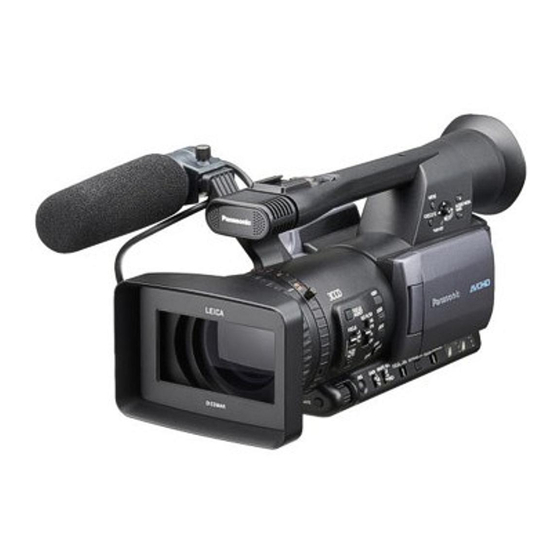Glossary
24p, 24pA, 30p. Various formats of progressive
video, 24 frames per second, 24 frames per second
Advanced, and 30 frames per second respectively. See
Progressive Scan.
3:2 Pulldown. A technique used to convert 24
frames per second lm to 30 frames per second video.
Every other lm frame is converted to 3 video elds
resulting in a sequence of 3 elds, 2 elds, 3 elds, 2
elds, etc. as illustrated above. See Progressive Scan.
360-degree pan. A panning shot which turns
around a full circle. See Pan.
4x3. e aspect ratio of standard television, as
opposed to the 16x9 aspect ratio of high de nition
television, a.k.a.1.33: 1.
16x9. e aspect ratio of wide screen television (may
be either standard or high de nition) as opposed to
the 4x3 aspect ratio of standard television. Sometimes
referred to as 1.77: 1 or 1.78:1.
3-Chip. A term used to describe prosumer and
professional cameras that use three separate CCD or
CMOS sensors, one for the red channel (with a red
lter), one for green (with a green lter), and the
third for blue (with a blue lter) as opposed to using
a single sensor with a Bayer pattern.
60i. Interlaced video with 60 elds per second (30
frames per second). See Interlace Scan.
Access. e key ingredient for a good documentary:
access to the subject and their social milieu.
Aerial shot. An overhead shot, usually taken from a
helicopter or airplane or some clever contraption
involving wires. Can also refer to any high angle view
Introduction to the Panasonic AG-HMC150 AVCHD camcorder (rough draft)
of a subject taken from a crane or any high stationary
position.
Aliasing. Defects in the picture caused by too low of
a sampling frequency or poor ltering. Usually seen
as jaggies or stair steps in diagonal lines. Aliasing also
can occur in the temporal domain, for example, as
wagon wheels moving backward or slower than the
wagon is moving, due to the frame rate of the camera
vs. the speed of the wheel. Any undesirable distortion
of image or sound that is a result of less than perfect
digital encoding can be considered aliasing.
Analog. A signal that varies continuously in relation
to some reference. In contrast, a digital signal varies
in discreet steps.
Anamorphic lens. A lens that allows a wide image
to be photographed on a standard-sized frame. For
example, anamorphic lenses are available for the
Panasonic DVX100 (and several other video cameras)
which allows the use of the full 4x3 video frame when
shooting 16x9 video. e anamorphic lens essentially
takes a 16x9 image and squeezes it into a 4x3 frame.
In video terms this is often called "squeeze" or
anamorphic video.
Angle. See Camera angle.
Angle of view. e angle of acceptance of a lens
which depends on the focal length of the lens and the
camera aperture (related to the size of the imaging
device or lm frame). Wide angle lenses have a wide
angle of view (and a short focal length), telephoto
lenses have a narrow angle of view (and a long focal
length).
Anti-aliasing. e process of removing aliasing
artifacts. For example, adding vertical blur to an
interlaced video image, which assures that any ne
detail straddle more than one line, prevents "line
jitter" on an interlaced display.
Aperture. An adjustable opening (iris) in a camera
lens that controls the amount of light passing
through a lens, often expressed as an f-number (a
ratio of the opening and the focal length of the lens).
e aperture has an effect on depth of eld. Wide
openings (e.g. f/2.8) result in shallow depth of eld,
smaller openings (e.g. f/11) result in greater depth of
eld. us the aperture affects both the exposure and
the depth of eld.
Artifact. A visual effect caused by an error or
limitation in the system.
Aspect ratio. e ratio of the horizontal dimension
to the vertical dimension of a frame. 35mm lms are
typically shot with an aspect ratio of 1.85: 1 or 2.35:1
http://kino-eye.com/dvb/
24 / 35

